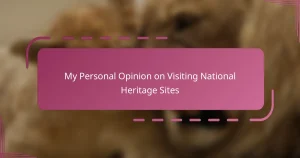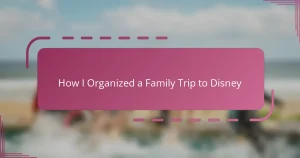Key takeaways
- Family volunteering fosters stronger bonds and emotional growth, teaching children empathy and the importance of teamwork.
- Habitat for Humanity empowers families and volunteers to build homes affordably while creating a sense of pride and community ownership.
- Preparation and understanding the purpose of volunteering enhances the experience, making it more meaningful for everyone involved.
- Involving children in planning and celebrating small victories keeps the spirit of service alive and transforms volunteering into a valued family tradition.
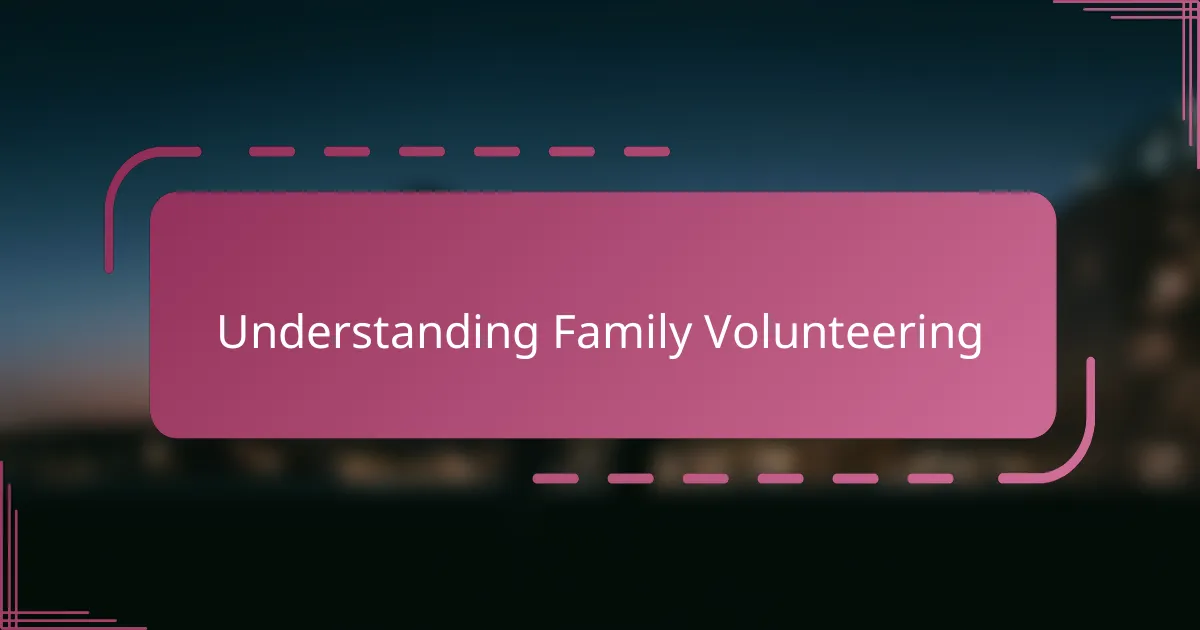
Understanding Family Volunteering
Family volunteering means more than just working side by side; it’s about experiencing together the joy of giving and the power of community. I remember the first time my kids helped at Habitat for Humanity—watching their faces light up as they saw the tangible impact of their efforts was unforgettable. Have you ever noticed how volunteering can bring out the best in everyone, sparking conversations and teaching lessons that no classroom can?
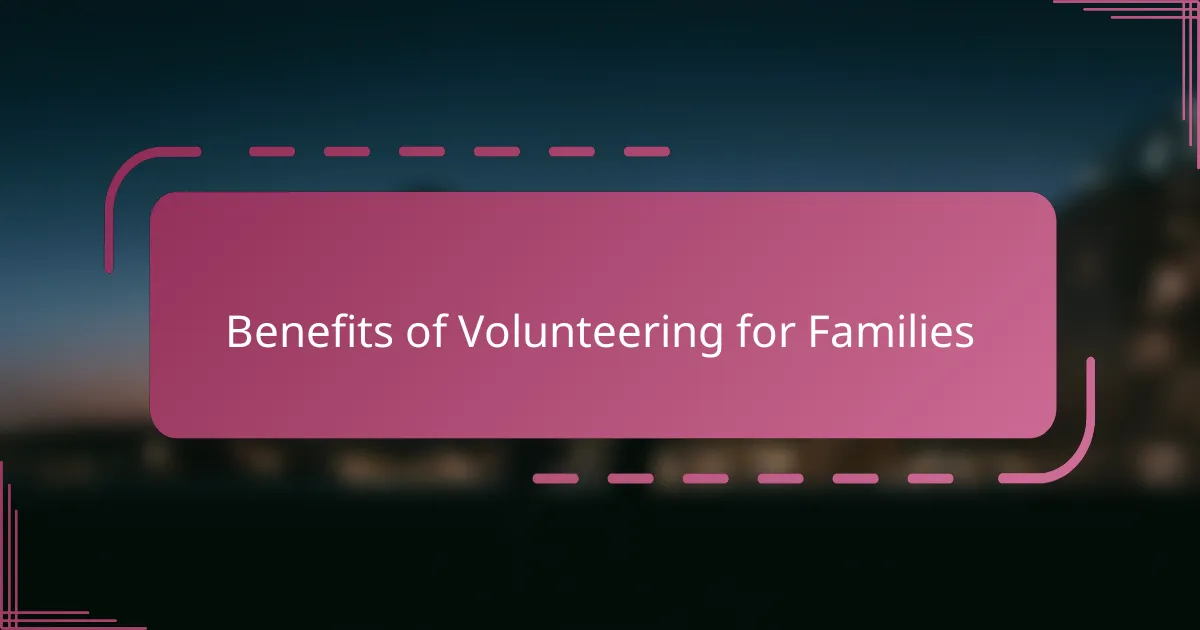
Benefits of Volunteering for Families
One of the biggest benefits I’ve seen from volunteering as a family is the way it builds stronger bonds. When we’re working together on a project, whether hammering nails or painting walls, there’s a shared sense of purpose that brings us closer. Have you ever felt how working side by side on something meaningful naturally leads to deeper conversations and laughter?
Volunteering also teaches my children about empathy in a way that stories or lectures never could. Seeing firsthand how a new home changes a family’s life made everything we talked about real and urgent. It’s powerful to watch kids shift from “I have to help” to “I want to help” because they’ve connected emotionally.
And beyond the emotional growth, there’s a practical lesson in teamwork and responsibility. My kids learn how their actions matter, and that each small contribution adds up to something big. Isn’t it amazing when you realize that a simple act like painting a wall can teach life skills and confidence all at once?
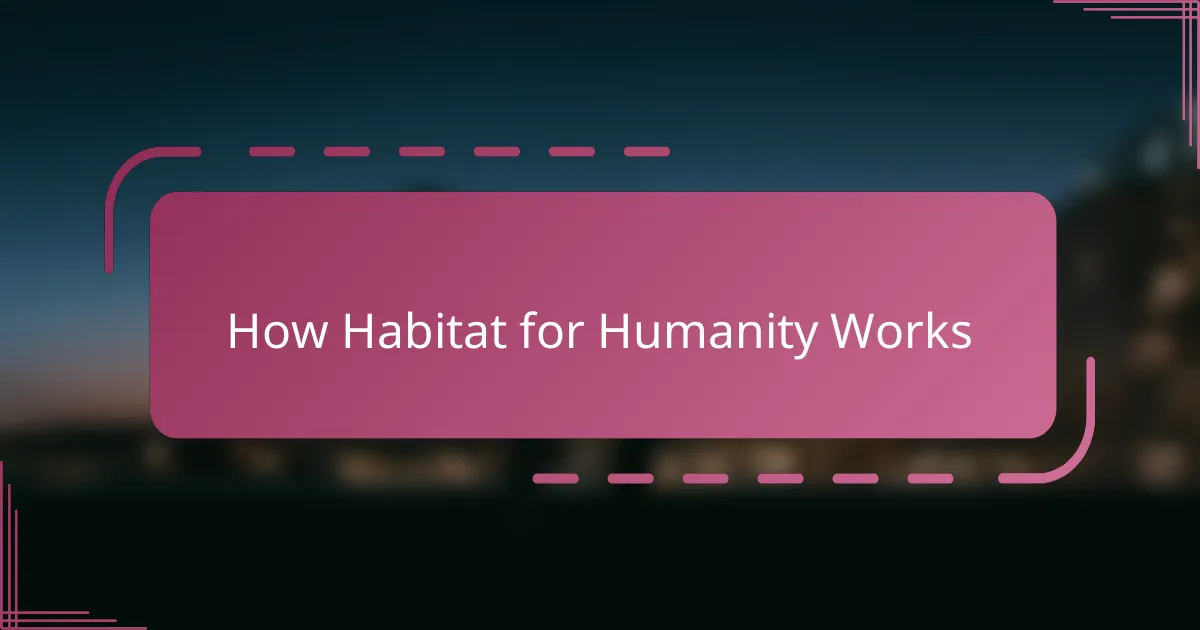
How Habitat for Humanity Works
Habitat for Humanity operates by bringing volunteers and future homeowners together to build affordable houses. I’ve found it inspiring how everyone, from families like mine to seasoned pros, pitches in to construct safe, decent homes for people in need. Have you ever thought about how teamwork transforms piles of lumber into a real place called home?
The process starts with partner families investing their own “sweat equity” by assisting in the construction alongside volunteers. From my experience, this shared effort not only builds houses but also creates a strong sense of pride and ownership that sticks with everyone involved. It’s like watching a community grow brick by brick, one hands-on moment at a time.
Habitat also sells these homes at no-profit, affordable prices with zero to low-interest loans, making homeownership reachable for many. I’ve always admired how this practical approach combines compassion with sustainability—giving families a chance to thrive without feeling charity’s weight. Isn’t it amazing how a simple model can make such a lasting difference?
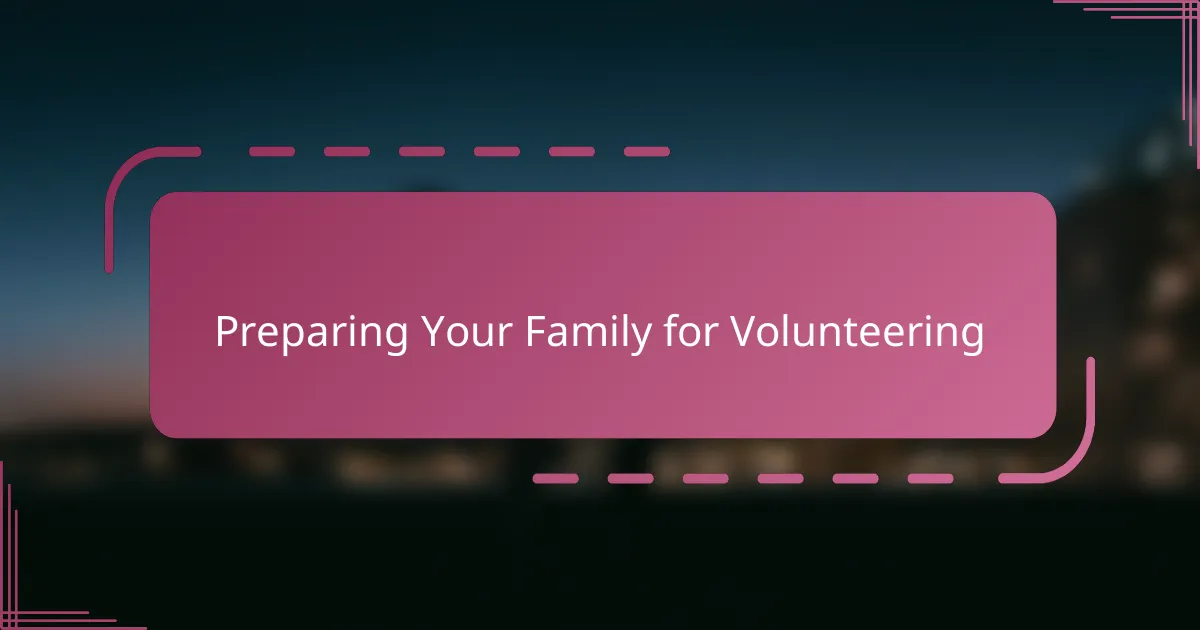
Preparing Your Family for Volunteering
Before heading out to volunteer, I always make sure our family knows what to expect. Talking about the tasks ahead helps ease any nerves, especially for the kids, so they feel prepared instead of overwhelmed. Have you noticed how a little planning can turn uncertainty into excitement?
Another thing I find helpful is laying out what to bring—comfortable clothes, gloves, and plenty of water. These small details might seem obvious, but they make a huge difference in the overall experience. When my children have their own gear, they feel more involved and ready to contribute.
I also take time to discuss the bigger picture with my family before volunteering. Understanding why we’re helping and who benefits adds meaning to every hammer swing and paint stroke. Isn’t it amazing how knowing the “why” can turn hard work into a shared mission?
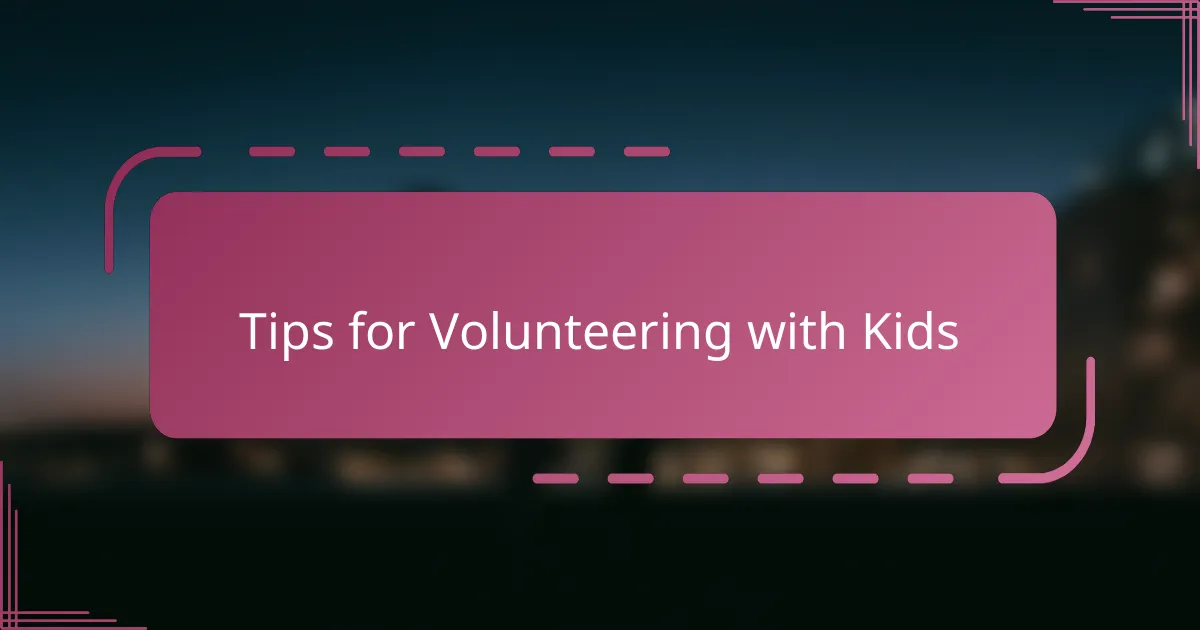
Tips for Volunteering with Kids
One thing I always keep in mind when volunteering with my kids is to match tasks to their ages and abilities. Letting my youngest handle simpler jobs like handing over tools or painting small areas keeps them involved without feeling frustrated. Have you ever noticed how giving kids manageable responsibilities not only boosts their confidence but makes the whole day more fun?
Patience is key, too. Sometimes kids get distracted or tired, and that’s okay. I remind myself that the goal isn’t perfection—it’s the shared experience and the memories we create along the way. Have you found that a relaxed attitude helps your family enjoy volunteering even more?
Lastly, I recommend celebrating every small win. After a day spent volunteering, we talk about what we did and how it helped others. That reflection turns the experience into a meaningful family story we carry forward. Isn’t it wonderful when volunteering becomes not just an activity, but a treasured tradition?
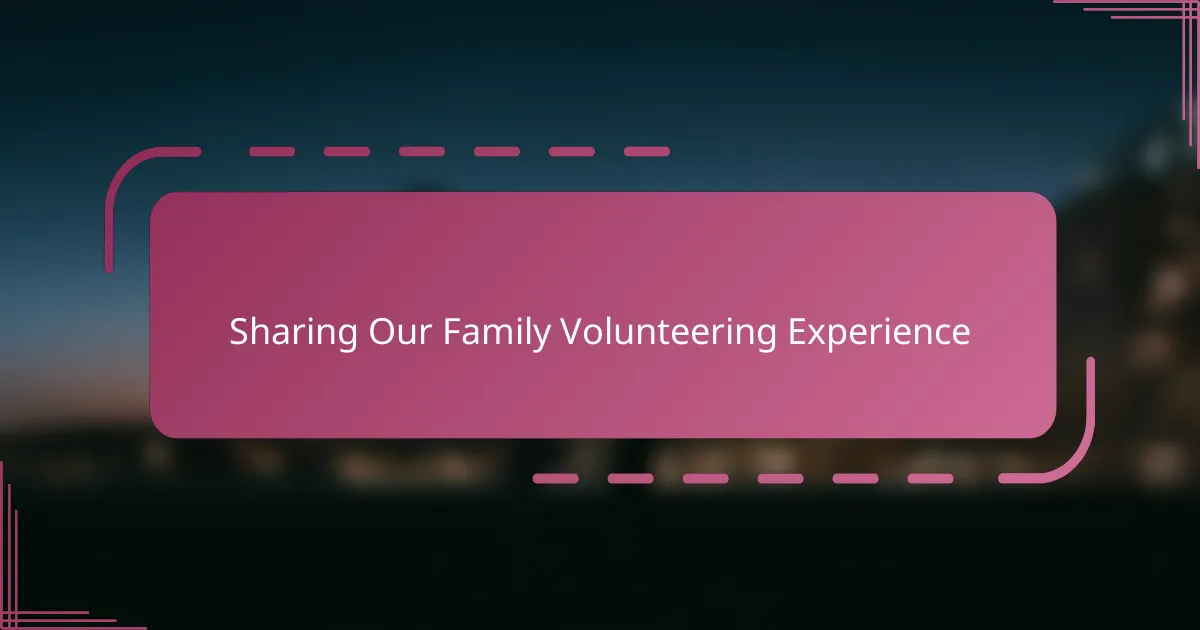
Sharing Our Family Volunteering Experience
Our very first day volunteering at Habitat for Humanity felt like stepping into a new world for us all. I recall my youngest carefully handing over tools while my teenager proudly tackled painting walls. Watching the kids take ownership of their roles brought a warmth to my heart that I hadn’t expected; it’s moments like these I cherish deeply.
What struck me most was the way our family conversations naturally shifted during the work. Instead of typical daily chatter, we found ourselves sharing thoughts about hope, kindness, and the power of teamwork. Have you ever noticed how working side by side creates a unique space for meaningful talks that just don’t happen any other way?
At the end of each volunteering day, we’d gather to reflect on what we’d accomplished. My children’s eyes would light up as they shared stories about the families who would live in the homes we helped build. Those reflections didn’t just make the work meaningful—they fueled a sense of pride and empathy that stayed with us long after the tools were put away.
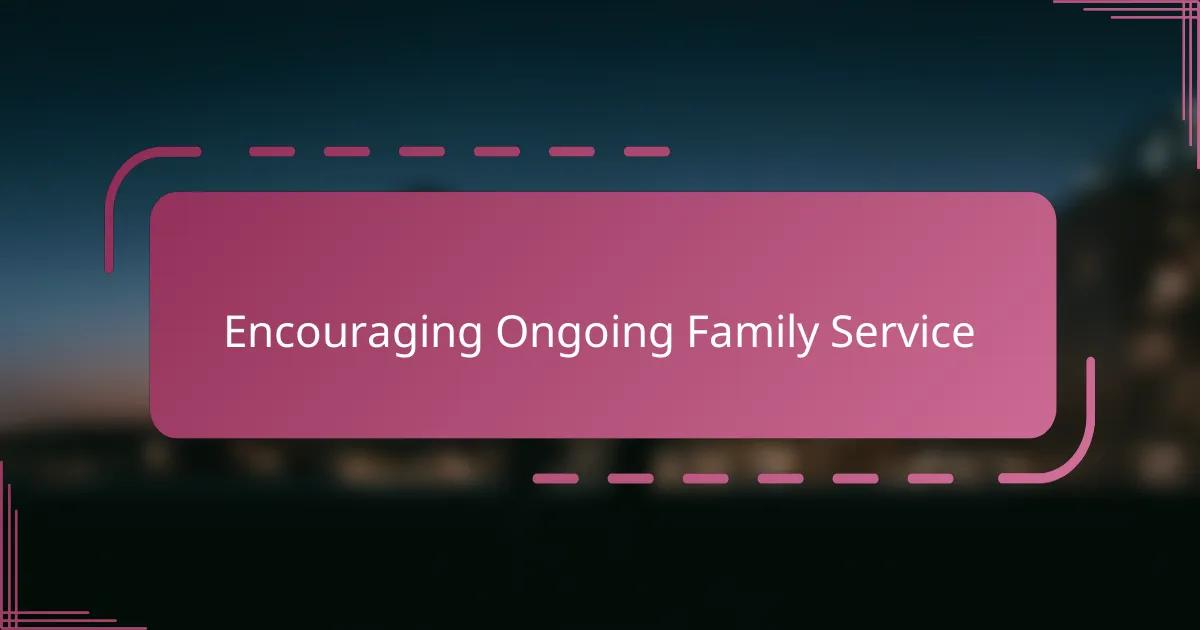
Encouraging Ongoing Family Service
Keeping the spirit of service alive in your family takes a bit of creativity and a lot of heart. I’ve found that setting a regular “volunteering day” on the calendar helps everyone look forward to it, almost like a special family tradition. Have you tried turning service into something your family anticipates rather than just another chore?
Sometimes, it’s about celebrating the small moments that make volunteering feel rewarding. After our Habitat days, we make a habit of sharing what touched us most or what we learned from the experience. These conversations keep the impact fresh in our minds and encourage us to find new ways to help. Isn’t it amazing how a simple chat can deepen our commitment to serve?
Also, involving the kids in planning future volunteering activities has been a game-changer for us. When they help choose projects or ways to contribute, their enthusiasm skyrockets and their sense of ownership grows. I wonder, have you noticed how giving kids a voice in service turns helping others into a personal mission rather than just a family obligation?
